
La Misión de Corpus Christi de San Antonio de la Ysleta del Sur was established in 1682 by Spanish refugees fleeing the Pueblo revolt of 1680 in the area of Northern and Central New Mexico. Native peoples from Isleta, Socorro and other of the Pueblos either fled along with the Spanish colonists or were forced to accompany them. This site is situated along the Camino Real (now Socorro Road east of here and part of Alameda west of here) which extended from Mexico City to Santa Fe. Formerly south of the Rio Bravo (Rio Grande), the mission is now north of the river after a change in its course during heavy flooding in 1848.
The original mission church built in 1682 of adobe and a tin-roofed bell tower has been reconstructed several times in its history due to flood and fire damage. The current structure though of the original dimensions and on the original footings, was reconstructed in 1851 and repaired after a major fire in 1907. The current ceiling, façade and upper tower date from 1908. The parish has the honor of being the oldest Roman Catholic Church in continuous use in the United States.
In the mission church the oldest statue is that of El Santo Entierro (the Buried Christ>under the altar of St. Anthony. It dates from 1726. This statue is taken in procession by the Tigua people at the end of Good Friday Liturgy of the Passion of Our Lord. The procession takes el Santo Entierro from the main church through the streets around the mission complex. The statue is then replaced in the mission church. This commemorates the death of Christ and his being laid in the tomb. The Easter Vigil begins at the doors of the Mission Church on Holy Saturday night with a procession to the main church.
Other statues in the mission are of different periods. Some are plaster statues (e.g. St. Anthony, Our Lady of Mt. Carmel some older ones (probably from before 1850) are wooden with plaster over layering (e.g. San Lorenzo, the Sacred Heart of Mary, and St. Joseph). The St. Joseph statue has a small metal plaque at its base with the artisan’s name: Francisco Tapia de D. F. (Mexico City). The statue of St. Therese of the Child Jesus, in the side chapel, is from 1927. Note that on the base of the statue of San Martín de Porres is written “Bto”, short for “beato” (Blessed) which indicates that this statue dates from before ____, the year the saint (santo) was canonized.
In 2004 a permanent statue of St. Kateri Tekakwitha, patron of Native Americans, will be among the mission’s santos. This will be in honor of the annual national Tekakwitha Conference being held in El Paso in June 2004. As part of the restoration of the Mission, the Tigua Pueblo purchased a new statue of St. Kateri Tekawitha.
The stations of the cross, retelling the story of Jesus’ passion, already appear in a 1925 photo of the church interior. They were most likely placed in the church after the 1907 fire.
An original bell is hanging in a pedestal in front of the Mission church. There is a large hook on this pedestal where the Tigua Indians’ “war drum” is hung on the Tigua’s traditional feasts (see dates below) during services in the church. The Mission bell tower has three bells of different sizes cast by the Meneely Bell Company, Troy, NY, in 1925.
The Mission church’s baptismal font was sold to a now schismatic Catholic community in the 1980s. Since then, unsuccessful efforts have been made to have the font returned to the Mission church.
There is a foot pump organ in the loft, as well as an electronic organ.
The name of the parish was changed to Our Lady of Mount Carmel in 1874 at the request of the French pastor and the non-indian parishioners. The Tigua have continued their devotion to San Antonio, thus the parish in effect has two patronal feasts: June 13 for San Antonio and July 16 for Our Lady of Mt. Carmel.
There is still a strong presence of the Tigua speaking Indians in the parish. Their festival days help to connect the contemporary community to the days when the Mission was begun.
Special Events:
Tigua Tribal Feasts
Eucharistic Liturgy at 2:30 pm with Tigua Native Dances
January 1 New Years
January 6 Three Kings/Epiphany
June 13 St. Anthony Patron Saint of the tribe and Misión
8:00 am Mass with dances and native ritual all day
June 24 John the Baptist / San Juán Bautista
June 29 Sts. Peter and Paul / San Pedro y Pablo
July 25 St. James / Santiago
July 26 St Anne / Sta. Ana
November 30 St. Andrew / San Andres
December 25 Christmas / la Navidad Midnight & 2:30 pm
December 28 Holy Innocents / los Inocentes

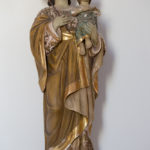
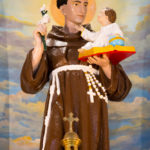
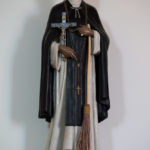
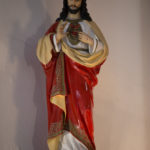
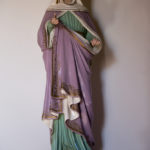
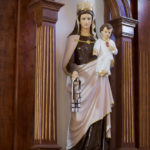
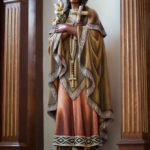
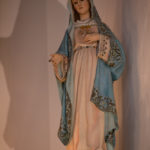
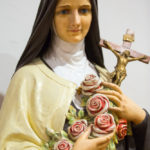
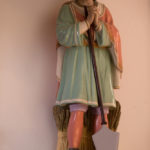
Be the first to comment